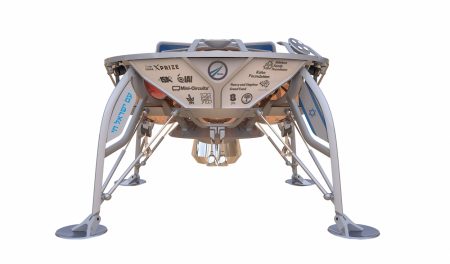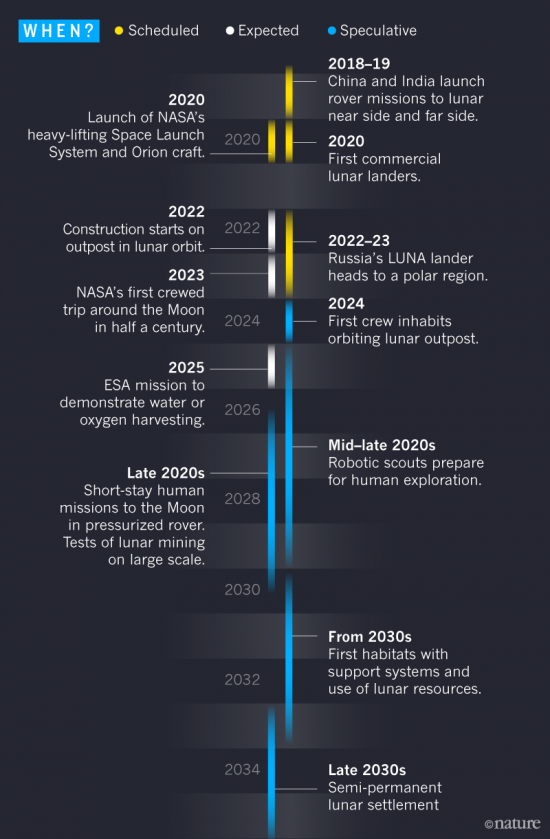
January 22, 2019 – The European Space Agency (ESA) has contracted Arianespace, PTScientists, and Space Application Services, to put a robotic lunar lander on the Moon to begin drilling into the regolith to a depth of more than 3.65 meters (12 feet) in search of water ice for the production of oxygen, and hydrogen.
The lunar regolith contains iron oxide, clays, water ice, and other elements needed to sustain a human presence on the Moon, and ESA wants to be first to begin mining these resources. The contract calls for a mission that will go from launch to landing plus data collection on the results of the initial assay of materials found.
Stated Dr. David Parker, Director of Human and Robotic Exploration at ESA, “The use of space resources could be a key to sustainable lunar exploration and this study is part of ESA’s comprehensive plan to make Europe a partner in global exploration in the next decade.”
Arianespace and its parent the ArianeGroup will be the prime contractor. Stated André-Hubert Roussel, CEO of ArianeGroup, “This first contract is a milestone for ArianeGroup, which has for a long time been working on technological proposals for space logistics servicing.” Arianespace currently has the capacity to send payloads to the Moon of up to 8.5 metric tons using the Ariane 5 rocket. The Ariane 6, nearing completion, and variants like the Ariane 62 with solid-fuel strap-on boosters, will more than double payload capacity.
PTScientists, located in Berlin, Germany, will be responsible for the lander and its operation on the lunar surface. The company specializes in in-situ resource use (ISU) and is focused on extracting water and oxygen from the lunar regolith as a prerequisite to further resource development of the Moon.
Space Application Services, located in Belgium, will provide communications and logistics support for the mission planned for 2025.
ESA is one of a number of players in the new race to the Moon that appears to have been stimulated by the 50th anniversary of the first humans to land on the lunar surface. China in the last month landed Chang’e-4 to explore the far side of the Moon.
Russia and ESA are working on a joint project to place a lander near the Moon’s South Pole to study geology and search for water ice. This mission may be the first step towards putting a lunar base on the Moon’s surface.
An Israeli company has a lunar lander that is to be launched in an upcoming SpaceX mission in February. It is Israel’s entry for the now-defunct Google Lunar XPrize, a competition which ended last year without a winner.
India’s ISRO is also looking at the Moon as a destination for resource development. Chandrayaan-2 is scheduled for launch this year and will place the Vikram lander and robotic rover near the South Pole.
And then there is NASA with its multi-country project to place a space station in lunar orbit as a base for Moon exploration and potential resource exploitation. The Lunar Gateway project may involve Russia, Japan, ESA, and Canada as partners. Veterans of the Moon landings question the need for such a multi-billion dollar effort which may be the only reason for NASA’s continued investment in the heavy-lift Space Launch System, the successsor rocket to the Saturn V.
In a recent issue of Nature the following infographic appeared showing the timeline for scheduled, expected and speculated upon missions to the Moon in the 2020s and 30s.








